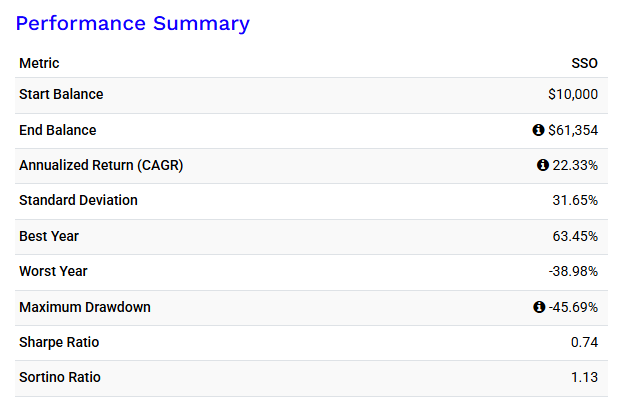Debt vs. Leveraged ETF: What’s the Smarter 2x Strategy?
10-Year ETF Reality Check Series_part 3
This post is part of a 4-part series analyzing long-term ETF strategies, risks, and smarter investment paths.
When 2x Exposure Isn’t the Same
Let’s say you have $10,000. You want more exposure to the stock market—double, in fact.
Should you borrow another $10,000 and invest it all in VOO?
Or should you go with SSO, a 2x leveraged ETF?
On the surface, both give you a 2x position. But under the hood, they behave very differently.
The Setup
We tested 3 strategies over a 10-year period (2015–2024):- 💳 VOO + $10,000 Loan @ 3% interest
- 💳 VOO + $10,000 Loan @ 5% interest
- 📈 SSO with $10,000 capital (2x leverage ETF)
Key Metrics Compared
We focused on:- 📈 CAGR (Compounded Annual Growth Rate)
- 📉 Max Drawdown
- 📊 Volatility
- 📉 Worst Year Return
Here’s What We Found
1. CAGR: VOO with 3% loan returned a higher net CAGR than SSO.
2. Risk: SSO had significantly higher volatility and a deeper drawdown (over -60%) compared to debt-financed VOO.
3. Resilience: The debt-based VOO portfolio weathered downturns better and recovered faster in most scenarios.
Why This Matters
If your goal is to boost long-term returns without exposing yourself to ETF-level volatility decay, debt-based investing may offer a middle path. 💡 Lower interest rates + a disciplined repayment plan = a more stable 2x strategy.But Wait—What About Risk?
Of course, debt introduces its own risks. If the market tanks and you're on margin or holding a loan, you're still on the hook. However, the drawdowns in SSO were more severe and emotionally draining—requiring stronger conviction to hold.So Who Should Consider This?
This approach may work for investors who:- Have access to low-interest capital (e.g., 3–5%)
- Are disciplined with cash flow and debt management
- Want to enhance returns without daily rebalancing or compounding distortion
Final Take
If you’re choosing between 2x leveraged ETFs and debt-financed index investing, know this:SSO may grow faster in a straight-up market—but it’s also more fragile when volatility hits.
In contrast, borrowing at a manageable rate to double your index exposure may offer a better balance of risk and reward for steady-minded investors.I hope this note brings a little more clarity, calm, and richness to your life.
Read the Full Series:
- Part 1 – VOO vs QQQ: Which Index Fund Wins Over the Long Term?
- Part 2 – Are Leveraged ETFs Really Worth It?
- Part 3 – Debt vs. Leveraged ETF: What’s the Smarter 2x Strategy?
- Part 4 – Why Buy Individual Stocks When ETFs Are Already Diversified?

Let’s meet on X
, too.
(Follow Olivia for more slow thoughts and steady growth)
Back to HOME
Better Living Notes

1.png)
1.png)




Comments
Post a Comment